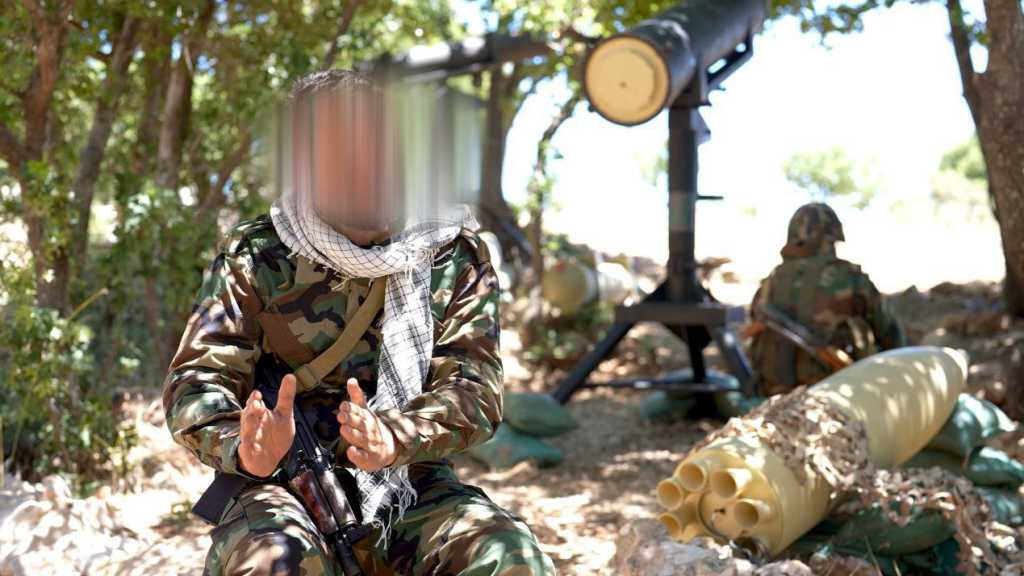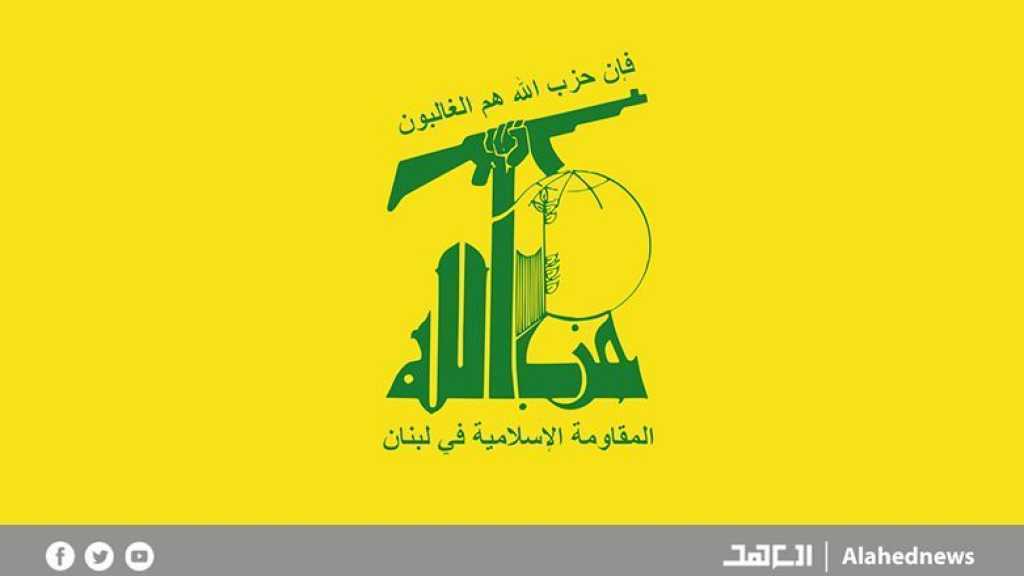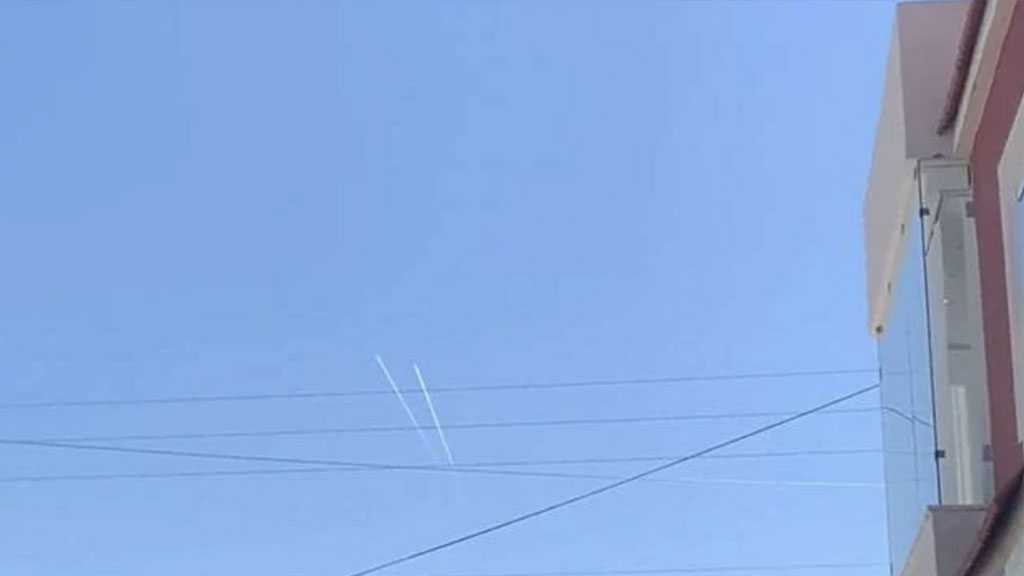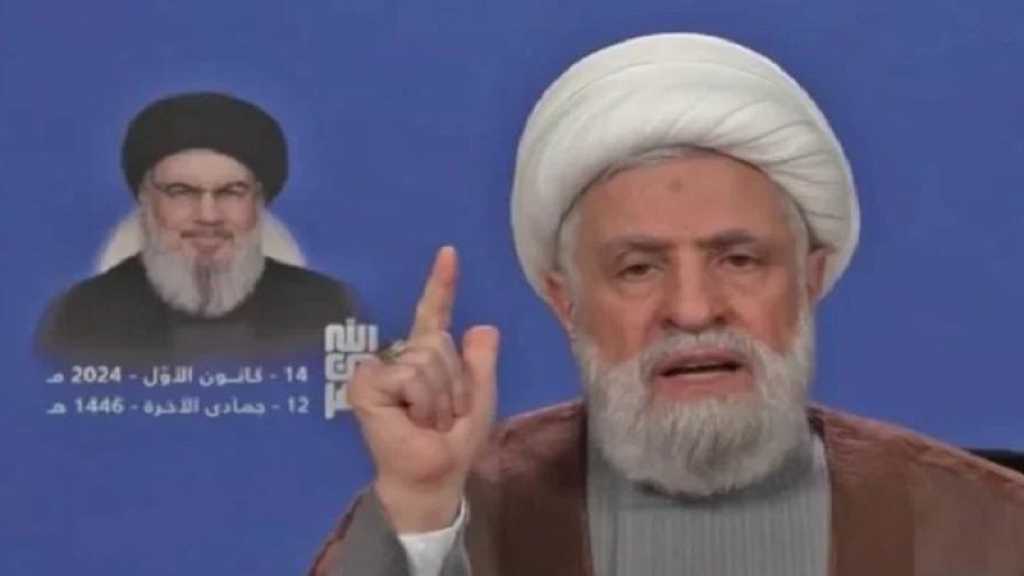How Did Hezbollah Develop Its Artillery? Officer Confirms: “Israel” to Face Major Surprises

By Al-Ahed News
Officer in Hezbollah’s Artillery Division, Hajj Mohammad Ali, affirmed that what has been displayed so far is a very little bit of the efforts that have been made for 17 years.
“This is on the levels of quantity, accuracy, and ranges of fire. The enemy is to face major surprises on the level of the ground battle,” the officer added, explaining that “the weapons which were displayed in the latest episode, and other ones, will be deployed in the battle.”
The Artillery Division officer emphasized that the current stage of the battle might expand into a war, and might also remain in the current regulations and circumstances until the end. Yet, according to the Resistance leadership, once the war in Gaza ends, the battle in Lebanon ends.
In an episode of the program entitled “But It Was Allah Who Did So” aired on Al-Manar TV, Hajj Mohammad Ali insisted that hadn’t this battle been limited, then the scene would have appeared differently on the levels of weapons and ammunitions that will be used in the battle be it on their destructive level of ranges of attacks.
He unveiled a new missile that has been put into service during the supportive battle of “Al-Aqsa Flood”, which belongs to the “Burkan” heavy missiles family, named “Jihad”. It was a sort of wisdom from the Resistance leadership not to announce the name of this weapon, which was fully designed by the Resistance engineers. This weapon was used to attack “frontline bases from the Shebaa Farms side, then the “Hounin” or “Ramim” base,” the officer said. “We scored a direct hit there, and the last launch was at the Eastern Brigade HQ in “Kiryat Shmona” [Gibor Base]. We fired two missiles towards the same target. The hit was precise and caused highly destructive.”
He went on to explain that the footage filmed by settlers’ mobile phones exposed the damage, whether in the base itself or the parking lots for vehicles surrounding the base. “We used this weapon there, and I am telling you again it is designed by the Resistance, which has a production line o this weapon.” Hajj Mohammad Ali made clear that there are restrictions and regulations related to using this weapon. He then put the following questions: “How would the scene look like in case we used the same type or form of this weapon against Northern settlements and cities? How would the scene look like both on the destructive and psychological levels, or among soldiers or settlers?”
The enemy, the officer said, is aware of how the Resistance would use this weapon. “It knows that this weapon was used to target the outskirts of the “Kiryat Shmona” settlement, and if we wanted, we would have aimed the barrels at the center of “Kiryat Shmona” and launched it. The message has been definitely received.”
The special episode went deep through the Artillery Division within the Islamic Resistance, and weapons and ammunitions it is using in the battle to “support Gaza” along the Lebanese-Palestinian borders. It also tackled certain phases the Artillery Corps went through on the levels of preparations and industry, linking all of it to the history of the Islamic Resistance in Lebanon.
Scenes depicting the fire control room of the Artillery Division were displayed in the episode, and so was the artillery monitoring mission. “Martyr Imad Monitor,” “Martyr Samir Mattout Monitor,” some scenes of a military parade of the division, as well as a drill for training on and testing the weapons and ammunitions before they are put into service of the Islamic Resistance Artillery were also published.
The Artillery Division officer noted that this weapon was put into service in the morning of October 8 as part of the battle to “support Gaza”. It was launched towards the Shebaa Farms and it has been used for nine months in an asymmetric warfare on the level of the difference of power between the Islamic Resistance and the enemy.
Hajj Mohammad Ali added that the Resistance, since the beginning of its operations to support Gaza, managed to innovate means of operating the artillery to be useful, including heavy weapons, and used it in some places in a way that suits the way the Resistance fights the enemy. The officer pointed to the high morale of the Resistance fighters who can operate this kind of weapons amidst the enemy’s aerial and fire superiority.
Hajj Mohammad Ali referred to the historical background of the Division, which can be divided into three phases based on its role:
The 1993 phase was to provide deterrence in face of the enemy’s airstrikes.
The 1996 phase was to cement the previous equation of deterrence for another time.
And the third phase until the 2000 liberation, when the Resistance faced the way of “the osprey chasing the snake” used by the enemy against the Resistance. The Division started adapting the weapons from fixed into weapons of tactical use that suits this battle. It was also with the aim of confronting “the osprey chasing the snake” style, the Resistance started firing from launchers that could be relatively evacuated within a short time using launchpads that are carried on vehicles. The launchpads fire the barrage and withdraws.
According to weapons and ammunitions, the Artillery Division officer unveiled three types of “Burkan”-type missile, which was designed by the engineers of the Islamic Resistance in Lebanon. They are light, medium, and heavy. He further pointed to that the main goal behind designing the “Burkan” missile was the battle for Galilee, to destroy the enemy’s frontlines entirely in which no sites would be left for the enemy to settle in, whether front sites or those of the leadership. The missile is made to be used in an urban environment, in which we have to offer fire support through this missile to the force that wants to fight in an urban location. The missile has a huge destructive effect and a psychological impact on the enemy’s soldiers inside their sites whether on the level of its sound the horror it causes. It is equal to the enemy’s strikes and their impact on our villages and people.
Hajj Mohammad Ali further mentioned the “Falaq-1” [114 kilograms] and “Falaq-2” [250 kilograms] destructive and standard missiles that were added to the battle according to the level of responses imposed by the Resistance leadership. They can reach 11-kilometer-deep targets and were used to target the Aerial Operations Control Base in “Meron Mountain” [Jarmaq Mountain]. The officer made clear that each missile is equal to an airstrike, and that launching a “Falaq” rocket launcher equals an air force fire belt. This launcher has also been manufactured by the Islamic Resistance engineers.
In response to a question whether there is more than “Falaq-1” and “Falaq-2”, the Islamic Resistance Artillery Division officer said: “We upgraded from “Falaq-1” to “Falaq-2” upon an order, and as per the restrictions of this battle, we will upgrade and it will be shown later.”
As for the “Katyusha,” Hajj Mohammad Ali announced that in the beginning it was used without instruments, through wooden bars. It was then upgraded to individual and dual ejectors, until it reached the “ship”, a cement rocket launcher with multiple nozzles that have between 7, 10, and 15 barrels. We then reached the current phase in which the Resistance is manufacturing multi-nozzle fixed launchers that reach 100 nozzles. It is also manufacturing wheeled launchers in the form of military jeep or pick up. He then noted that the “Katyusha” are of 122 and 107 millimeters although they are used regularly on a 40-nozzle launcher. “The production of the Resistance matches that of the Russian and North Korean armies.
According to Hajj Mohammad Ali, the “Katyusha” was used in this battle in three ways. The first was to directly strike targets, sites, and barracks in the “Israeli” depth. The second was to be used in a complex way with other types of weapons, such as drones and guided missiles.
And the third was through striking settlements for any attack against the Lebanese towns and villages.
This weapon was also used to strike the “Iron Dome” as explained by the Artillery Division officer. He pointed to the tactic of launching missiles at the “Iron Dome” battery itself to empty it from missiles, and later the last “Katyusha” missiles make their way to these batteries as was the case in ‘Kfar Blum”, Northern Occupied Palestine, and the “Kayla” and “Yoav” bases in the Occupied Syrian Golan. According to the policy of drowning, the “Katyusha” missiles expose the newly established locations of the “Iron Dome” in cooperation with the Propelled Air Force. Striking the “Iron Dome” and thwarting its operation was key factor in displacing most of the settlers in the North who used to consider it as the final safe haven.
Hajj Mohammad Ali didn’t spare the opportunity to remind that the human force of the Artillery Division has to feature certain scientific qualifications that are required to handle heavy vehicles. They also have to be mentally, psychologically, and technically focused in the battlefield, not to mention bravery and daring. He said the fighters are more than special on the physical, morale, intellectual, and technical levels, which make this weapon achieve the desired goals.
In his final words of the interview, the Artillery Division officer addressed Hezbollah Secretary General His Eminence Sayyed Hassan Nasrallah. He affirmed that the Resistance fighters are still determined to fulfill the promise they made to him. “Our hands are still on the triggers, and our launchers and nozzles are ready to the battle since the first day of Resistance until this day. Any orders given to the Artillery Division will be perfectly executed and with the highest possible efficiency. We are waiting for his orders to continue in this battle.”
Comments


![Netanyahu: What Startled Me is Thet [Sayyed] Nasrallah Was the Axis of the Axis](https://english.alahednews.com.lb/uploaded2/images/20241221111732.jpg)

